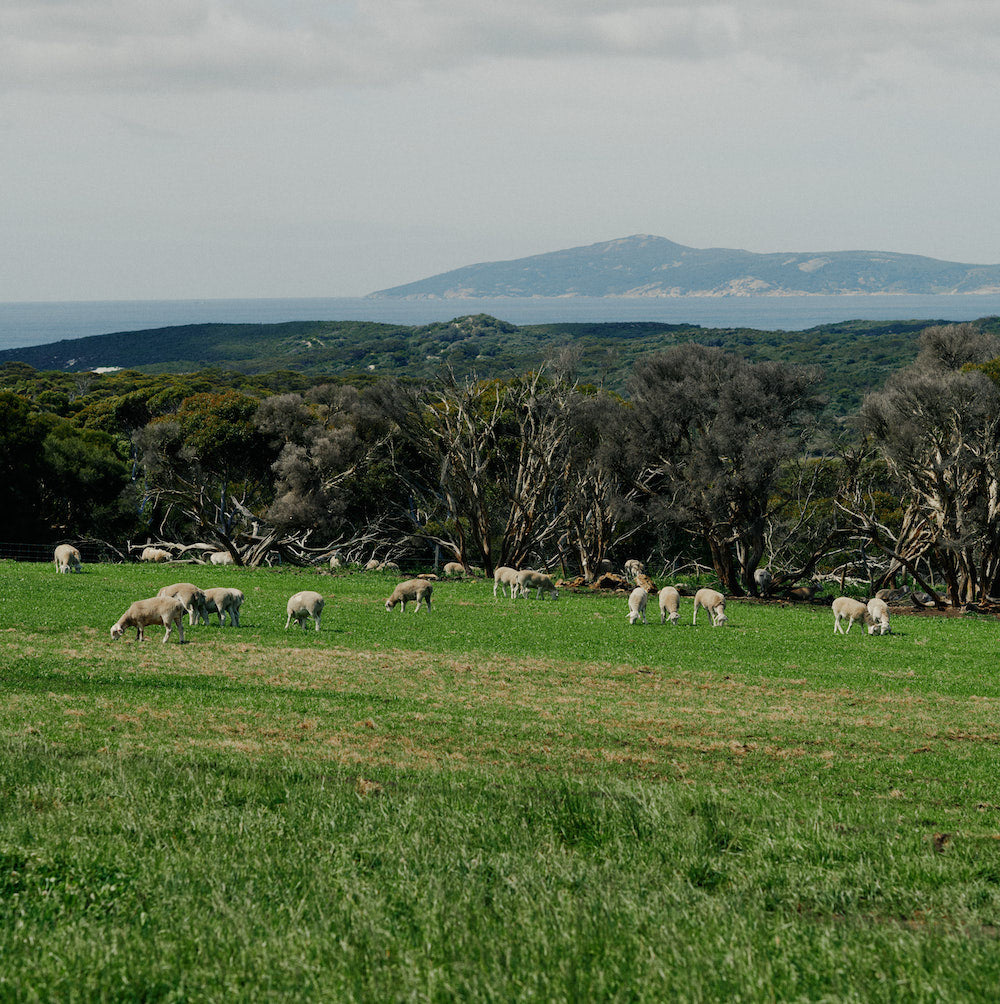
Why DCF's Regenerative Lamb is the Best in the West!
|
Time to read 3 min
|
Time to read 3 min
Green Range Lamb hails from, you guessed it - Green Range! In the Great Southern region of Western Australia, about an hour east of Albany on our South Coast.
So why do we think we have WA’s best lamb? Because we haven’t found a tastier product! The next question is: how do we have WA’s best lamb?
We think it comes down to 4 main points: genetics, management, diet, and the dedication and passion of two very hardworking farmers and their families.
Dawson Bradford, a prime lamb producer for over 50 years, set out to breed a sheep capable of performing well across a wide and diverse range of climate and conditions. He started the process in 2005 with the mating of a selection of Poll Dorset ewes from his stud flock to top White Dorper rams in order to breed a wool shedding composite sheep that was easy-care and hardy. Here, Green Range Lamb's iconic Ultrawhite breed was born. Ultrawhite sheep are a high performance, fast growing, low maintenance, wool shedding sheep.
Ultrawhites have great intramuscular fat - think the wagyu of the sheep world.They also have even fat coverage (remember, fat is flavour!) and their fat has a very low melting point, giving the meat a silky mouth feel, with none of the hardened or congealed texture you can find in supermarket lamb.
In holistic managed grazing, the animals have daily contact with the farmers, sheep dogs and vehicles - so they become used to them. Not only that, they soon realise that the arrival of a ute or ATV means that they are about to move onto fresh pasture - so they’ll often line up at the fence ready to be let into the next paddock! This familiarity with people means that the sheep are calmer when being worked through the sheep yards, are less likely to hurt themselves, and have much lower stress levels. Long term this also translates into better flavour in their meat, as they are less likely to be stressed at the abattoir, which would spike adrenaline in their system.
Holistic managed grazing or high density rotational grazing refers to grouping grazing animals together in a tight group, giving them a small amount of space to graze, and moving them as often as possible.
Holistic managed grazing mimics the way large herds behave in the wild, when they are put under pressure from predatory animals such as wolves - they bunch together for safety. This means that they are eating the grass in one place down to the ground in a couple of mouthfuls, and then moving onto the next area. The grass has the intense animal impact of the plant being eaten, the residue being trodden into the ground, and the sheep pee and poo landing on top. The plant then begins to grow again, and regenerates itself.
Diverse pastures are regenerating all over the Green Range farm, due to a combination of holistic planned grazing, and the expertise of Col and Ash in seeding and establishing chicory, plantain, lucerne, clover, and many other diverse grass species to produce top quality feed for the lambs. This diverse mixture encourages strong gut health and healthy growth of the lambs.
Green Range Lambs enjoy special grass fed pellets to supplement their diet during the colder months. This is particularly important through autumn and winter, when new grass is growing and is very high in water and low in protein. These pellets are important in providing that fibre, and in complementing the diverse pastures to ensure lambs always have access to the nutrition they need to grow strong and healthy.
Col and Ash have developed a fantastic working relationship where they bring their different strengths together to grow the happiest, healthiest, and tastiest lambs. It’s thanks to their hard work and ongoing dedication to improve and innovate that we are able to supply you, our customer, with this fantastic product.
If you haven’t tried our ultrawhite lamb yet, I can highly recommend it! Not only is it the best tasting lamb around, you’re actively supporting these passionate farmers to regenerate our soils and ecosystems, and move one step closer to regenerating our planet.




